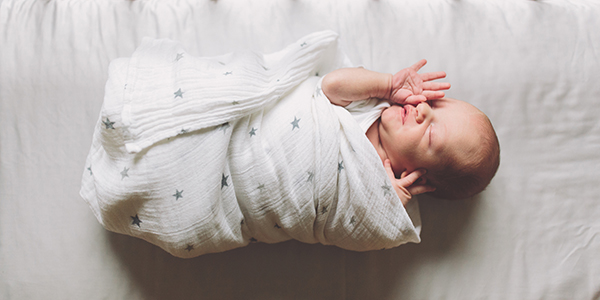Safe Sleep for Infants

Sleep is an important part of your baby’s development, and good sleep habits can be a blessing for both babies and parents. It's also important to know how to create a safe sleep environment for babies. According to the American Academy of Pediatrics (AAP), Sudden Unexpected Infant Death (SUID), which includes Sudden Infant Death Syndrome (SIDS), is the leading cause of death for infants between 1 month and 1 year of age. Mara Bernal Suarez, a pediatric N.P. at Sutter, offers the following simple tips for ensuring safe sleep for babies.
Safe Sleep Basics
- Always place your baby on their back to sleep, never on the stomach or side.
- Dress your baby lightly and skip loose blankets. Safer options include sleepers, sleep sacks and wearable blankets.
- Keep the room at a temperature comfortable for a lightly clothed adult. Watch for signs of overheating such as sweating, flushed cheeks or rapid breathing.
Creating a Safe Sleep Space
The American Academy of Pediatrics recommends room-sharing but not bed-sharing. The safest place for your baby is in a crib or bassinet placed within arm’s reach of your bed. Choose a firm mattress with a fitted sheet, and make sure the crib or bassinet is JPMA-certified.
Keep the sleep space clear — no blankets, pillows, stuffed animals, bumpers, wedges or sleep positioners. And never place your baby on couches, adult beds or cushions, where they could fall or become trapped.
Swaddling and Sleep
Swaddling can help babies feel calm and secure, but it should always be done safely:
- Place a swaddled baby only on their back
- Stop swaddling by about 2 months, when babies begin trying to roll
- Leave room for your baby’s hips and legs to move freely
- Secure fasteners properly to prevent loose fabric
Swaddling is not a replacement for a safe sleep environment — always follow the guidelines above.
Reducing the Risk of SIDS
Doctors don’t yet know what causes SIDS, but research shows that parents can lower risk by:
- Placing babies on their backs to sleep
- Breastfeeding if possible
- Keeping the home and car smoke-free
- Using a firm mattress and tight-fitting crib sheet
- Offering a clean, dry pacifier at bedtime (after one month if breastfeeding)
For more guidance, explore the Safe to Sleep campaign from the National Institute of Child Health and Human Development.
Safe sleep is about finding a balance — taking simple precautions without letting worry overshadow the joy of caring for your baby. With a secure sleep space and healthy habits, you can rest easier knowing your baby is resting safely too.
Care That Grows With Your Child
From checkups to sick visits and everything in between, our pediatricians are here to support your child’s health at every stage.




